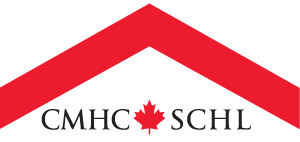Elevated household debt remains a key vulnerability for households and it represents a risk to the stability of the housing sector. Highly indebted households are vulnerable to a prolonged negative shock that could constrain more of them to sell their houses. This would pose a risk to house prices and jeopardize household wealth if properties for sale were to flood the market.
The onset of the COVID-19 pandemic brought on a negative shock to the economic situation of both renter and owner households. This also presents a risk of more households ending in housing need and a risk of monetary loss for landlords and financial institutions.
Canadian households were highly indebted before the COVID-19 pandemic changed our way of life. We want to explore the evolution of household debt in Canada since the onset of the COVID-19 pandemic. This brief examines the evolution of household debt and employment by census metropolitan area (CMA) from the end of 2019 to the second quarter of 2020.
Key findings
- The evolution of mortgage debt was uneven in Canada between the last quarter of 2019 and the second quarter of 2020. It ranged from -3% to 3% across different census metropolitan areas (CMAs).
- Non-mortgage debt contracted in all metropolitan areas over the same period. Important declines in outstanding credit card debt were a key driver of the contraction in non-mortgage debt. This is probably a result of reduced spending.
- Total outstanding debt only increased in these areas between the fourth quarter of 2019 and the second quarter of 2020:
- Abbotsford-Mission
- Toronto
- Hamilton
- Vancouver
- Overall employment trends do not seem to explain the difference in mortgage debt growth. The areas with the strongest mortgage debt growth also experienced employment contractions on par with (or above) the Canadian average.
- More analysis of the distribution of job losses by household tenure and by occupation would shed light on the debt-related risk profile of some CMAs.
A silver lining in Canadian household debt
The Canadian household debt picture exhibits some contrast.
On the one hand, mortgage debt continued to increase between the end of 2019 and the second quarter of 2020 in most CMAs. This is similar to the trend observed between 2012 and 20191. The increase in mortgage debt was partly due to:
- the completion of pending sales transactions concluded in the months prior to the onset of the pandemic
- an increase in deferred mortgage payments from borrowers2.
In addition, a sharp pullback in new listings maintained some pressure on house prices in some markets. This can contribute to higher outstanding mortgage debt.
On the other hand, outstanding non-mortgage debt decreased in both the first and second quarters of 2020, bucking a growth trend observed in previous years.
Equifax credit data shows a decline in credit card debt in Canada’s largest CMAs3. This was an important driver of the decline in the total Canadian non-mortgage debt, particularly between the first and second quarters of this year. This decline in credit card debt is likely the result of restrained spending and increased savings brought on by the COVID-19 pandemic. The contraction in non-mortgage debt since the beginning of the pandemic offset the increase in mortgage debt in all but four CMAs. Total outstanding household debt only increased in:
- Abbotsford-Mission
- Hamilton
- Toronto
- Vancouver
Regional disparities in mortgage debt growth
Mortgage and non-mortgage debt growth by CMA shows further contrast in the evolution of debt in the first half of 2020. While non-mortgage debt declined in all CMAs, mortgage debt grew by close to 3% in some areas. It decreased by almost the same percentage in others (figure 1).
Three of the four CMAs where total household debt increased since the onset of the pandemic saw the largest mortgage-debt growth:
- Abbotsford-Mission
- Hamilton
- Toronto
These CMAs are also the only ones displaying stronger mortgage-debt growth than the Canadian average.
In Abbotsford-Mission, mortgage debt increased at the fastest pace of all CMAs between the end of 2019 and June of 2020. Non-mortgage debt saw the smallest decline. While the balance of most types of non-mortgage debt decreased over the period under review, we noticed a 4.4% increase in home equity line of credit debt.
In Vancouver, also a CMA where total debt increased, mortgage debt growth was below the Canadian average. The decline in spending and credit card debt did not make as big a dent in non-mortgage debt as it did in Toronto or Hamilton, for example.






 Share via Email
Share via Email
